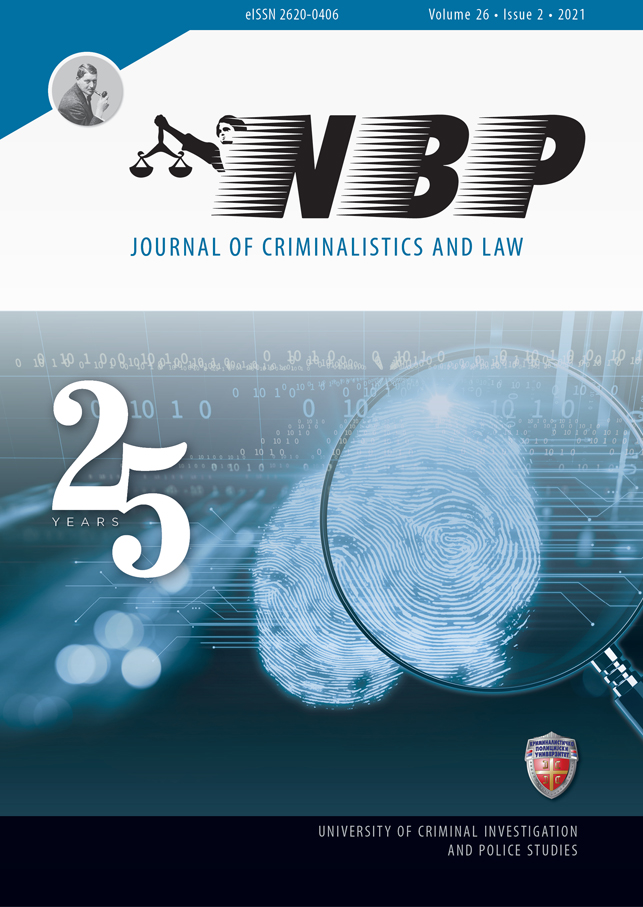Limitations on Freedom of Expression in Practice of the European Court of Human Rights and the Notion of Disinformation
Abstract
The phenomenon of disinformation spreading is a well-known phenomenon. The problem has intensified primarily due to advances in technology. In addition, there is an increased desire for additional information in circumstances of uncertainty and crisis. Some states even resorted to vague or too strict laws or derogations of rights in case of public emergency. While examining whether there is a need for interference with freedom of expression, it seems that the European Court of Human Rights does not give special relevance to the term of disinformation. Nevertheless, two key elements of disinformation can be distinguished. Disinformation is tied to the information’s veracity and the intent of the information provider. When determining whether an interference with freedom of expression is justified, the European Court of Human Rights gives these elements some weight, along with comprehensive analysis of other relevant factors. Fear from spreading disinformation must not lead the authorities to simply adopt strict and/or vague laws with severe penalties, which might fail to meet the requirements of freedom of expression protection. However, the term of disinformation can have value in policymaking directed at raising the credibility of information in general.
References
Criminal Code of the Republic of Hungary, as amended by the Act C of 2012 on the Criminal Code, Magyar Közlöny, 2012-07-13, vol. 92, pp. 1-122.
Axel Springer AG v. Germany (2012). Application no. 39954/08, Grand Chamber judgment of 7 February.
Cannie H. and Voorhoof D (2011). The Abuse Clause and Freedom of Expression in the European Human Rights Convention: An Added Value for Democracy and Human Rights Protection? Netherlands Quarterly of Human Rights, 29(1), 54–83.
Chang, L. Y. C., Mukherjee, S. and Coppel, N. (2021). We Are All Victims: Questionable Content and Collective Victimisation in the Digital Age. Asian Journal of Criminology, 16, 37–50.
Couderc and Hachette Filipacchi Associés v. France (2015). Application no. 40454/07, Grand Chamber judgment of 10 November.
Council of Europe Treaty Office (2020). Notification - JJ9014C Tr./005-226 - 18 March 2020 - Declaration related to the Convention for the Protection of Human Rights and Fundamental Freedoms (ETS No. 5). https://rm.coe.int/16809cee30
Council of Europe (2020). Hands off press freedom: attacks on media in Europe must not become a new normal, Annual Report by the partner organizations to the Council of Europe Platform to Promote the Protection of Journalism and Safety of Journalists. https://rm.coe.int/annual-report-final-en/16809f03a9
Republic of Serbia Criminal Code (2019), translation of the original Law, Službeni glasnik. https://www.mpravde.gov.rs/files/Criminal%20%20%20Code_2019.pdf
Delfi AS v. Estonia (2018). Application no. 64569/09, Grand Chamber judgment of 28 June.
European Commission (2018a). Tackling online disinformation: a European Approach. COM (2018) 236 final. https://eur-lex.europa.eu/legal-content/EN/TXT/?uri=CELEX%3A52018DC0236
European Commission (2018b). EU Code of Practice on Disinformation. https://digital-strategy.ec.europa.eu/en/policies/code-practice-disinformation
Gunatilleke G. (2021). Justifying Limitations on the Freedom of Expression. Human Rights Review, 22, 91–108.
Handyside v. The United Kingdom (1976). Application no. 5493/72, judgment of 7 December.
Hertel v. Switzerland (1998). Application No. 59/1997/843/1049, judgment of 25 August.
Hoboken J. at al. (2019). The legal framework on the dissemination of disinformation through Internet services and the regulation of political advertising Final report, Amsterdam: Institute for Information Law. https://www.ivir.nl/publicaties/download/Report_Disinformation_Dec2019-1.pdf
Hunt, A. and Gentzkow, M. (2016). Social Media and Fake News in the 2016 Election. Journal of Economic Perspectives, 31 (2), 211-36.
James H. F. (2004). Information: Does it Have To Be True? Minds and Machines, 14, 223–229.
Krivični zakonik (KZ) 2005, Službeni glasnik Republike Srbije, br. 85/05, 88/05 - ispravka, 107/05 - ispravka, 72/09, 111/09, 121/12, 104/13, 108/14, 94/16.
Magyar Jeti Zrt v. Hungary (2018). Application no. 11257/16, judgment of 4 December.
Milanovic, M. (April 2020). Viral Misinformation and the Freedom of Expression: Part II. EJIL: Talk! https://www.ejiltalk.org/viral-misinformation-and-the-freedom-of- expression-part-ii/
Moyakine, E. and Tabachnik, A. (2021). Struggling to strike the right balance between interests at stake: The ‘Yarovaya’, ‘Fake news’ and ‘Disrespect’ laws as examples of ill-conceived legislation in the age of modern technology. Computer Law & Security Review, 40, 1-13.
Network Enforcement Act -Netzdurchsetzunggesetz, NetzDG (2017). Federal Law Gazette I, p. 3352 ff. Valid as from 1 October 2017. https://germanlawarchive.iuscomp.org/?p=1245
Perinçek v. Switzerland (2015). Application no. 27510/08, Grand Chamber judgment of 15 October.
Radio Twist a.s. v. Slovakia (2006). Application no. 62202/00, judgment of 19 December.
Report of the independent High-level Group on fake news and online disinformation (2018). A multi-dimensional approach to disinformation, European Union. https://op.europa.eu/en/publication-detail/-/publication/6ef4df8b-4cea-11e8-be1d-01aa75ed71a1/language-en
Romanov v. Ukraine (2020). Application no. 63782/11, judgment of 16 July.
Ruokanen and Others v. Finland (2010). Application no. 45130/06, judgment of 6 April.
Salov v. Ukraine (2005). Application no. 65518/01, judgement of 06 September.
Sardo, A. (2020). Categories, Balancing, and Fake News: The Jurisprudence of the European Court of Human Rights. Canadian Journal of Law & Jurisprudence, 33 (2), 435-460.
Satakunnan Markkinapörssi Oy and satamedia Oy v. Finland (2017). Application no. 931/13, Grand Chamber judgment of 27 June.
Shattock, E. (2021). Should the ECtHR Invoke Article 17 for Disinformation Cases? Blog of the European Journal of International Law. https://www.ejiltalk.org/should-the-ecthr-invoke-article-17-for-disinformation-cases/
Söderman v. Sweden (2013). Application no. 5786/08, Grand Chamber judgment of 12 November 2013.
Stojanović, Z. (2021). Komentar Krivičnog zakonika, Službeni Glasnik.
UN Human Rights Committee (2011). General comment no. 34 Article 19: Freedoms of opinion and expression, CCPR/C/GC/34.
Urbina, F. J. (2014). Is it Really That Easy? A Critique of Proportionality and 'Balancing as Reasoning'. Canadian Journal of Law & Jurisprudence, 27 (1), 167-192.
Vereinigung Bildender Künstler v. Austria (2007). Application No. 68354/01, judgment of 25 January.
Waldman, A. E. (2018). The Marketplace of Fake News. Journal of Constitutional Law, 20 (4), 849-870.
Wardle, C. and Derakhshan, H. (2017). Information Disorder Toward an interdisciplinary framework for research and policymaking. Council of Europe. https://edoc.coe.int/en/media/7495-information-disorder-toward-an-interdisciplinary-framework-for-research-and-policy-making.html
Williamson v. Germany (2019), application no. 64496/17, admissibility decision of 08. January.

